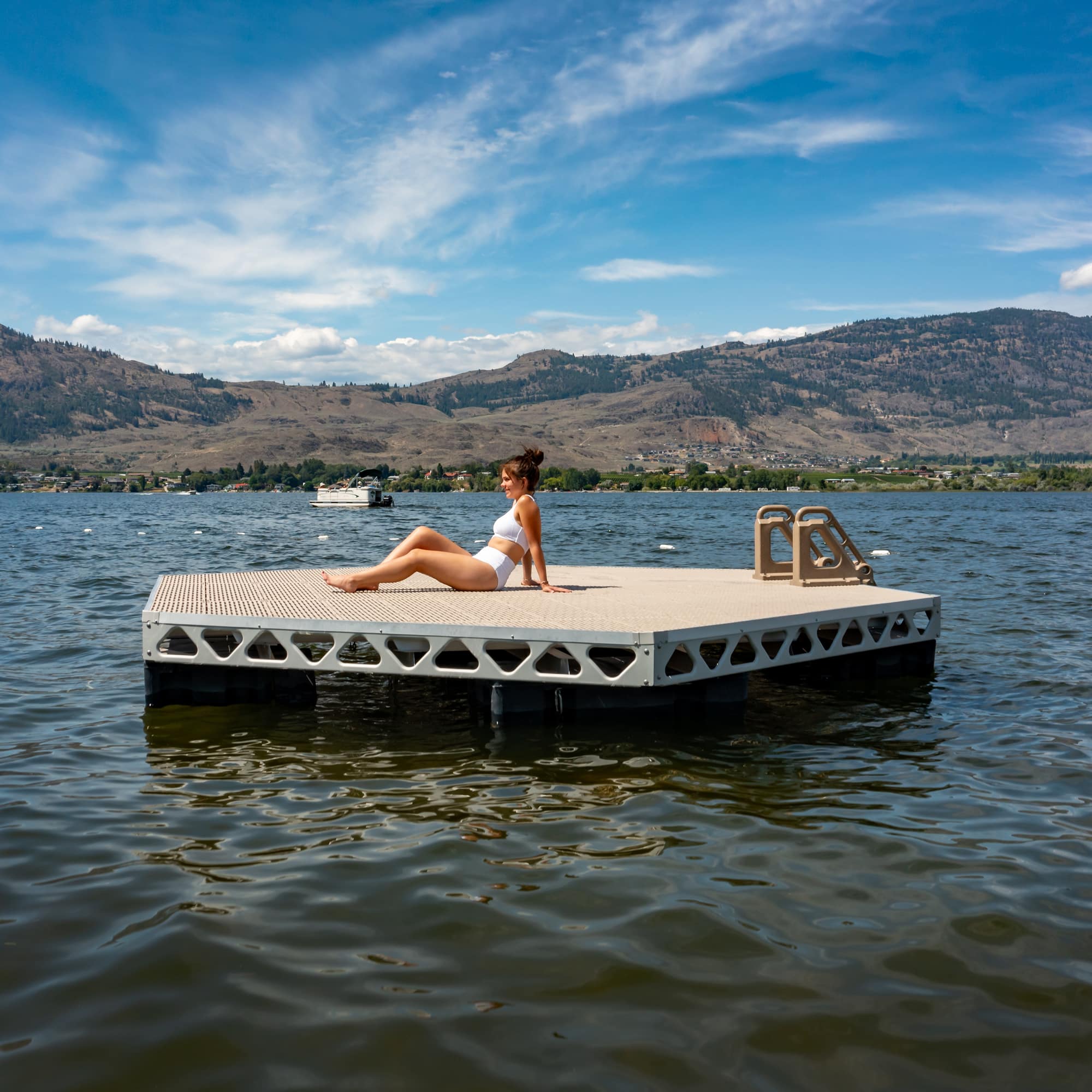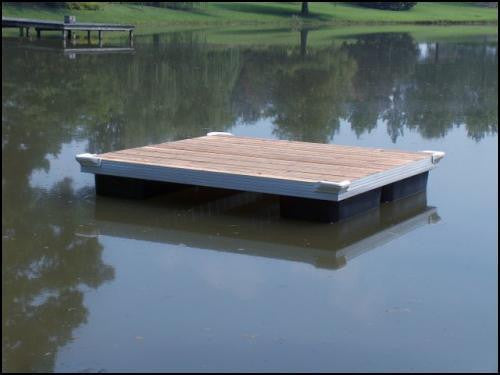Navigating the Options: Choosing the Right Dock Company for Your Floating Dock Project
Navigating the Options: Choosing the Right Dock Company for Your Floating Dock Project
Blog Article
Create the Perfect Docking Service With Floating Docks
Floating docks existing a flexible solution for a selection of maritime requirements, adjusting perfectly to changing water degrees and varied vessel types. As we check out the important elements that contribute to the effectiveness of floating docks, a number of vital variables relating to security and maintenance will arise, raising concerns regarding just how to optimize your docking experience.

Benefits of Floating Docks
Floating docks deal many advantages that make them an ideal choice for numerous maritime applications. One of the main benefits is their flexibility to transforming water levels. Unlike taken care of docks, floating docks rise and autumn with the trend, making sure constant availability for vessels. This attribute is especially essential in locations prone to considerable tidal variations or seasonal water degree adjustments.
Furthermore, floating docks are generally much easier and quicker to mount compared to conventional set structures. Their modular design enables uncomplicated assembly and disassembly, promoting upkeep and moving when necessary. This adaptability is especially useful for short-term applications or in settings where conditions may transform.
Floating docks additionally have a tendency to be a lot more environmentally pleasant, as they lessen disruption to the seabed and bordering water environments. Their resilient nature reduces the threat of damages to marine life, promoting a much healthier setting. Additionally, these docks can be tailored to accommodate numerous vessel dimensions, guaranteeing that they satisfy details operational requirements - dock company.
Inevitably, the mix of flexibility, convenience of installation, and environmental factors to consider makes floating docks a very effective option for a variety of maritime demands.
Picking the Right Materials
Picking the suitable products for floating docks is important to make sure durability, stability, and resilience. The selection of materials directly impacts the dock's efficiency in numerous ecological problems, consisting of exposure to water, sunlight, and potential wear from aquatic website traffic.
Typical products utilized for floating docks consist of light weight aluminum, wood, and high-density polyethylene (HDPE) Aluminum is lightweight, corrosion-resistant, and requires very little maintenance, making it an exceptional choice for durability. Its first price can be greater contrasted to various other materials.
Timber, while visually enticing and giving a standard appearance, can be prone to rot and insect damages if not appropriately treated. Utilizing pressure-treated wood or naturally long lasting varieties like cedar or redwood can alleviate these issues.
HDPE is a popular choice due to its resistance to UV rays and chemicals, together with being eco-friendly. floating docks. It is available and lightweight in various colors, permitting personalization
Eventually, the right material selection will depend on particular needs, consisting of spending plan, wanted aesthetics, and ecological factors to consider. Careful analysis of these variables will certainly bring about a resilient and effective floating dock service.
Design Considerations for Security
When developing floating docks, guaranteeing security is a basic facet that can significantly influence their performance and security. Stability in floating dock layout is influenced by numerous elements, consisting of buoyancy, weight circulation, and the setup of this post parts.
Weight circulation is important; equally dispersing lots across the dock prevents turning and enhances stability. This can be attained with strategic positioning of docking tools, such as fenders and cleats, as well as appropriate spacing of floats. In addition, the dimensions of the dock must be thoughtfully intended. Broader layouts can use raised stability, specifically in rough water conditions, while longer docks may require additional assistances to stop sagging.
Another essential consideration is the environmental impact, including wave activity and wind. Including functions such as sidewalls or skirting can aid alleviate the effects of ecological pressures, maintaining stability in damaging conditions. Eventually, a combination of thoughtful layout, material choice, and understanding of ecological factors will yield a drifting dock that meets both stability and security demands.
Installment Tips and Techniques

Following, safeguard the necessary permits and stick to local laws, which may determine installation techniques and ecological factors to consider. Involve a qualified service provider experienced in floating dock installments if needed. Use top quality materials developed for marine settings to improve durability and durability.
When positioning the dock, align it alongside the coastline to assist in easy access. Guarantee that the anchoring system is robust, utilizing concrete blocks or helical anchors to support the dock versus wind and wave action. It's essential to account for seasonal water degree variations, consisting of possible ice motion in cooler environments.
Throughout the installment, verify the dock's floatation and stability prior to completing the anchoring. Routinely evaluate the setup for any indicators of wear or damages. By complying with these suggestions and techniques, you can attain a safe, functional, and visually pleasing floating dock setup that fulfills your demands.
Maintenance and Treatment Standards
Keeping and caring go to this site for floating docks is crucial to lengthening their life expectancy and making sure safe use. Routine assessments should be performed to identify any indications of wear, damages, or aquatic development. Look for fractures, loosened fittings, or blemished locations on the dock's surface area, as these problems can compromise structural honesty.
Cleansing is crucial. Make use of a stress washer to get rid of algae, barnacles, and debris, which can accumulate in time. For stubborn growth, think about ecologically friendly cleaning representatives that will not hurt marine life.
Additionally, inspect the mooring lines and anchors regularly to ensure they are free and safe and secure from corrosion. Replace any frayed or damaged lines quickly to maintain stability.
During extreme weather condition, such as tornados or freezing problems, take precautionary actions. Protect the dock with additional mooring lines and, if feasible, remove any kind of detachable parts to stop damage.
Verdict
Finally, the application of floating docks presents a versatile and reliable docking remedy suitable for numerous maritime applications. Their adaptability to useful reference rising and fall water degrees, combined with a modular layout, permits simple customization and moving. Picking appropriate materials boosts both sturdiness and visual appeal, while careful consideration of stability guarantees safety and security and long life. With appropriate setup and normal maintenance, floating docks can supply efficient and reputable docking experiences for a broad range of vessels.
As we explore the important elements that contribute to the efficiency of floating docks, a number of vital factors regarding stability and upkeep will certainly arise, increasing concerns about exactly how to maximize your docking experience. Unlike taken care of docks, floating docks rise and loss with the trend, making certain regular access for vessels.When making floating docks, making sure security is a basic aspect that can substantially influence their functionality and safety. Stability in floating dock layout is affected by different variables, consisting of buoyancy, weight distribution, and the plan of components. Ultimately, a mix of thoughtful style, material option, and understanding of ecological elements will certainly produce a drifting dock that satisfies both stability and security requirements.
Report this page